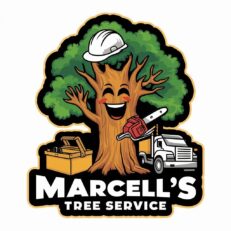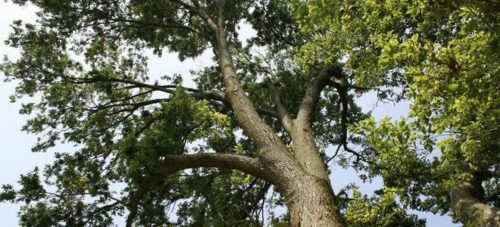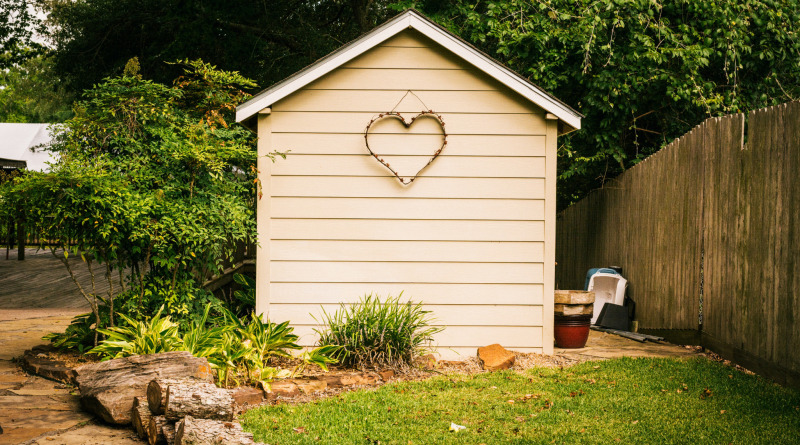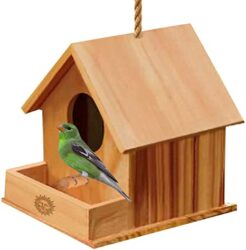Shade Trees With No Root Problems. Trees can bring an attractive and peaceful element to your yard, providing shelter for the birds.
Unfortunately, many homeowners are hesitant about planting trees in their yards. Because of the issues that may arise with the roots. If you aren’t careful about the type of tree you plant.
One way in which this difficulty can be resolved is by homeowners opting for tree varieties with less invasive root systems. If you are having trouble determining which trees are right for your garden.
Then contact an experienced arborist to help you.
A knowledgeable arborist can advise you about the types of trees. Guiding you to select ones that have root systems that do not expand so wildly.
As you go about selecting just the right tree for your yard, consider just how big that tree will ultimately get. Consider how far its roots will extend. If there are barriers, such as sidewalks.
Even the foundation of your home, nearby your planting site. You need to select a tree with a non-invasive root system.
BENEFITS OF PLANTING SHADE TREES WITH NO ROOT PROBLEMS
The ideal tree will do plenty more than merely offer shade. People everywhere love trees, and trees serve a whole range of purposes. They act as miniature ecosystems while providing definition and structure to areas, plus they further supply cleaner air.
Even just being near tall trees boosts people’s mental health and energy.
But there is a wide variety of trees that can be considered fast-growing, shade providers. What you need to do is to be certain to make just the right choice for your yard. Meaning, watch those roots!
SURVEY YOUR SITE
As you do when dealing with any plant, it’s essential that you work within the framework of your yard. When choosing a new tree to plant. Just as you can’t grow tulips amidst a bunch of rocks, or weeping willow in an English garden.
Certain trees are not meant to be placed near homes or sidewalks, etc.
Take notice of any places in your yard that are especially wet. Which you can see are directly beside or near septic or another utility line. Certain trees are amazing drinkers of water.
That will spell big trouble for your septic system, as their roots will wrap around the pipelines while searching for that all the necessary water.
THINK AHEAD
Before buying you need to consider exactly what the ultimate size of your tree will be. Sure that spruce might look fantastic at the corner of your house at present.
In five or ten years it can soar to the skies and become a continual threat to your house. Nature changes quickly. You have to be prepared for it by knowing what to expect and what you intend to do about it.
Patios, driveways, sidewalks, power lines, and streets. These are some of the other areas you need to be concerned about when planting a tree that is going to grow prolifically.
One of the great things about having a shade tree with no root problems. Is that it gives you the ideal spot to relax and cool off when you want to get out of the heat of the sun.
You might want to give some thought to planting these trees in the western, southern, or eastern areas of your property to get the ultimate protection from the sun.
The worst mistake made when planting, and yet the most common one as well is thinking only in the short term. Take your time when scouting out the ideal location for your new shade tree. And be sure that there will be no problems with the roots.
SOIL DRAINAGE AND WET AREAS
Never doubt the truth of this, soil conditions can either help a new tree thrive. Or do them together. If the ground is too wet or not drained well enough, it will only aggravate existing conditions and cause root rot.
Add some compost or gypsum to soil that is too much like clay to promote drainage. If possible, try to divert water from low-lying areas can keep the roots from becoming soggy.
Some trees love damp, wet conditions, but are still subject to root rot after they have been planted.
Below learn the advantages of shade trees with no root problems, and find out exactly which tree best suits your needs.
BEST SHADE TREES WITH NO ROOT PROBLEMS
The big issue with all tree roots is that they want water. All they can get, as quickly as they can get it! Sometimes this endless quest for water.
This unquenchable thirst causes tree roots to wrap around underground structures, such as sewer lines, and water tanks. And that’s not all. As we all know, homes and their foundations, sidewalks, and driveways.
Are also apt to break up when roots tunnel underneath them.
That’s where non-invasive root systems come in. Fortunately, these are less likely to obstruct or disrupt sidewalks, sewers, or your home. Plant a shade tree with a non-invasive root system to solve this problem once and for all.
Here are some of the best shade trees with no root problems.
DECIDUOUS TREES
These trees lose their leaves in fall. With this type of tree, you will usually have plenty of fall color. But also plenty of leaves to collect.
1. REDMOND AMERICAN LINDEN
Also referred to as basswood, this tree gives forth negligible, but aromatic, yellow or green flowers. It provides dense shade and golden leaves in autumn.
Native to the eastern U.S., it does best in sunny or partially shaded areas and grows to a height of about 36 inches annually. Reaches as much as 70 feet tall and 45 feet wide at maturity.
Won’t lose branches or damage the hardscape. The only downside to this otherwise hardy species. Is that it can attract a variety of disease and pest problems.
Which include borers, scales, aphids, anthracnose, canker, rust, and powdery mildew.
2. AMUR MAPLE
This is a small shade tree with blazing red fall color, covering much of the continental U.S. It can handle low temperatures, ice, and even snow.
It actually prefers cold to heat and full sun or partial shade. It will thrive where summer temperatures are not high and humidity remains low.
3. AMERICAN HORNBEAM
Birch tree native to Chicago which does well in shady landscapes. Also found in Florida and west to Texas and Minnesota. But prefers moderate humidity for the best growth.
No serious disease or insect issues. Occasional disease issues are leaf spots, cankers, and twig blight.
4. TRIDENT MAPLE
A slow-growing shade tree that’s perfect for patios and curbside areas. And can tolerate a large variety of soil types. Requires a minimum of six hours of unfiltered sunlight every day.
The Trident Maple is actually quite a strong and sturdy tree that fares very well in urban areas. It can easily withstand a lot of what an urban landscape can throw at it. And this includes wind, salt, drought, and even air pollution.
Furthermore, it’s flexible, capable of taking root, and flourishing in soil that is less than perfect. However, it does require good drainage, even with long-lasting droughts.
The leaves of this hardy tree remain green and lush. It can do well in partial shade and makes a top-quality choice for yards with plenty of sunlight.
5. SOUTHERN SUGAR MAPLE
This is a short-spreading maple tree that turns yellow in autumn. And has clusters of small hanging flowers. It is smaller but similar to the sugar maple of the northeastern U.S. and not as intense in color.
Just like other maples do, the sugar maple has a shallow, root system that spreads and handles wet soil conditions excellently.
6. KOUSA DOGWOOD
An ornamental tree with reddish-pink fruits that sports white clusters of leaves in the springtime. They resemble flower petals. This tree has a shallow root system.
It can grow perfectly fine in acidic, clay, moist, loamy, and even well-drained soils. Needs full sun to partial shade. Never invasive.
There are several varieties, including the “Gold Star,” the “Stellar Pink,” the “Satomi,” and the “Moonbeam.” It’s also somewhat like the Trident Maple in that it’s more drought-resistant.
7. ADAM’S CRABAPPLE
This tree makes a great selection if you’re in the market for a deciduous tree. With an appearance that is thicker, fuller, and more round. It’s a brilliantly colorful tree with bright pink to burgundy flowers that bloom in April.
And enjoys moist soil, but there must be proper drainage. It’s also renowned for its ability to resist some of the more common apple tree diseases, such as fire blight and apple scab.
Abundantly fragrant in the spring, the tree grows to maturity during the fall and winter. The roots of this tree are noninvasive and won’t grow down and then create cracks in sidewalks. The roots won’t spread to your home’s foundation either in their constant search for water.
A small flowering tree, its pink flowers turn into small, shiny-red crabapples that last until the winter.
8. JAPANESE MAPLE
Here we have yet another maple tree that can tolerate this latitude. And that provides a pleasant accent for any landscape, yard, or business storefront.
It’s a great tree for the cooler growing areas. This tree has astonishing burnt-amber-colored leaves that seem a tad wispy.
Japanese maples favor moist, well-drained soil that is also acidic and contains a strong dose of organic material. Should this tree be planted in a warmer environment?
The leaves will then proceed to lose their purple color and turn completely green. Regarding the roots of a Japanese Maple, it’s essential to be aware that this tree “self-stunts.”
What that means is that if the roots cannot expand wherever it’s planted. It will then stop all upward and outward above-ground growth.
9. CAPE ASH
The Cape Ash is a fine species that would make an excellent option if you’re seeking something with a nonaggressive root system. It is fast-growing and sports a thick, wide crown.
It’s frequently used along sidewalks and in places such as shopping centers. Landscapers want to make look good without having to be tended to too much. Due to how swiftly it grows, it’s one of the top selections for people who want to make some shade quickly.
While there’s no doubt that it does fantastically all over the Louisville area. One thing to take into consideration is that Cape Ash does generally grow wide and big, with the possibility of growing over 30 feet tall.
It’s not the best tree for smaller gardens or yards in which there is minimal space or confined space. This tree needs lots of space to call its own.
EVERGREEN TREES
If the sight of leaves year-round is something that you enjoy. By all means, go with some evergreens. Certain evergreens give ample shade and fast growth. And have little potential for destroying the hardscape.
Regardless of the fact that evergreens keep their foliage all year long. They do occasionally shed needles that necessitate cleaning up. This can in fact prove to be quite messy, so keep this in mind before you purchase one, and keep your rake handy.
1. BUTTONWOOD
This tree thrives in full sun. It can grow as much as 36 inches per year, extending up to 35 feet tall with a 30-foot spread. Buttonwood is considered to be moderately dense, with branches that withstand breaking and low root damage.
It sports pretty blue-green or silver leaves, does well planted in a variety of soils, and is tolerant of salinity. The one downside to this species is that they tend to develop sooty mold.
2. FRASER PHOTINA, OR RED TIP
Here is a tree that reaches 15 to 20 feet tall and wide at maturity. Its new leaves appear from bronze to bright red and turn dark green. As it grows it becomes an oval shape, supplies dense shade, and bears small white flowers in mid-to-late spring.
Furthermore, it withstands heat and dryness and adjusts to loam, clay, or sand. These trees live as long as 150 years and are mildew resistant, but do tend to get sooty mold and aphids.
3. AUSTRALIAN WILLOW
This tree is so named due to its appearance of weeping, though it is not a true willow. It requires moderate shade, growing to be 25 to 35 feet tall and 20 feet wide once it reaches maturity.
When spring comes, it has tiny white flowers or waits until the fall. Small, dry berries that supply lots of food for birds and animals. It should be noted that this tree generally does better on the coast than inland.
When planted in full sun to partial shade, adjusting itself to a range of soil conditions. And tolerating drought well. It survives 50 to 150 years and is fire resistant and also resists oak root fungus.
4. ENGLISH HOLLY
This evergreen reaches 35 to 40 feet tall and 25 feet wide when mature. “Big Bull” gives out dense shade with glossy oval evergreen leaves. This particular holly flourishes in full sun to part shade.
And requires moist soil, but withstands highly acidic to slightly alkaline clay, sand, or loam. While susceptible to leaf miner and scales, it is resistant to oak root fungus.
5. BRONZE LOQUAT
The bronze loquat reaches a height of 15 to 25 feet tall and 10 to 15 feet wide. Giving moderate shade. Its new leaves first appear copper-colored and then mature to green.
Evergreen leaves and peeling bark allow this tree to remain lovely all year. With small white flowers that emerge to bloom in the spring. It grows excellently in full sun and moist in clay, sandy soil. And withstands greatly acidic to highly alkaline soil.
TREES WITH SHOWY FEATURES
Certain fast-growing shade trees make impressive specimens that look fantastic. Placed in an area where you’re able to clearly see them and inhale their pleasing fragrance.
Or observe their visual features. Just be forewarned that flowers and fruit also mean plant litter. So be sure and plant them where this won’t be a problem.
1. INDIAN HORSECHESTNUT
If you’re looking for a fast-growing tree this one is an excellent choice. It grows up to 36 inches a year and provides extremely dense shade. Furthermore, it has strong branches and roots that won’t expand and cause destruction.
This particular tree can grow up to an amazing 60 feet tall and 50 feet wide. It favors full sun. It bears clusters of small, white blossoms in summer with blazing orange leaves and green encapsulated fruits in the fall.
But all of this amazing beauty comes with plant debris that gathers under the canopy of the tree.
2. TEXAS MADRONE
This is a tree that produces fragrant, white flowers in spring, an abundance of orange or red berries in fall or summer. And curiously peeling bark in shades of red and brown.
This particular tree has branches and roots that won’t inflict damage on your hardscape and can grow as high as 36 inches per year. To reach its maximum height and width of 50 and 25 feet, respectively.
While it’s true that it can litter the ground with its fruit and bark, it has a high fire-resistance rating.
WORST TREES TO PLANT NEAR HOUSE
These trees have invasive tree root systems that are widespread. And place the foundation of your house at risk of being cracked and eventually destroyed.
Once that happens, you know you are in big trouble! Plus, their wild roots can extend and even put cracks in your sidewalk or driveway. A whole lot of trouble because of one tree!
AMERICAN ELM
This is a full-bodied tree with shallow roots that can easily wreck your lawn, driveway, or sidewalk.
OAK
This is a fast grower, a much-loved tree that is appreciated by people everywhere. And yet is infamous for causing damage to foundations. While it’s considered by many to be a piece of Americana.
Its destructive qualities should cause you to think twice before planting one.
POPLAR
A tall tree with a well-known reputation for root problems that lead to sewer and foundation damage. A strong and rugged root system that is not easy to deal with.
WEEPING WILLOW
Large shade tree that is frequently found in invading sewer lines. A truly lovely tree that makes for a picturesque setting. But should be avoided if you are going to be planting it anywhere where the roots can do damage.
WHITE ASH
A rapidly growing shade tree with lateral, invasive roots that’s susceptible to the emerald ash borer.
The best thing you can do to avoid problems with a shade tree that has an invasive root system. Locate a tree you like, then do a bit of research to find out just how swiftly their roots grow.
How destructive they can be. The Internet makes this super easy nowadays. By looking into matters before making a purchase, you enable yourself to choose the right tree. Plus you save yourself the stress that results when tree roots meet foundations.
If you follow the above advice and make an effort to choose one of the recommended trees. You should have no difficulties whatsoever with the root system getting out of hand.
However, if you opt to just plunge blindly ahead and buy whatever catches your fancy. Then you will almost certainly have problems. When dealing with shade trees. The temptation is to think that the bigger it is, the better that is.
Because of the fact that you want as much shade as possible.
That isn’t always the case. You must investigate the type of root system a shade tree has before bringing it onto your property. Otherwise, you may end up having to cope with severely unpleasant consequences, when the roots run rampant.




